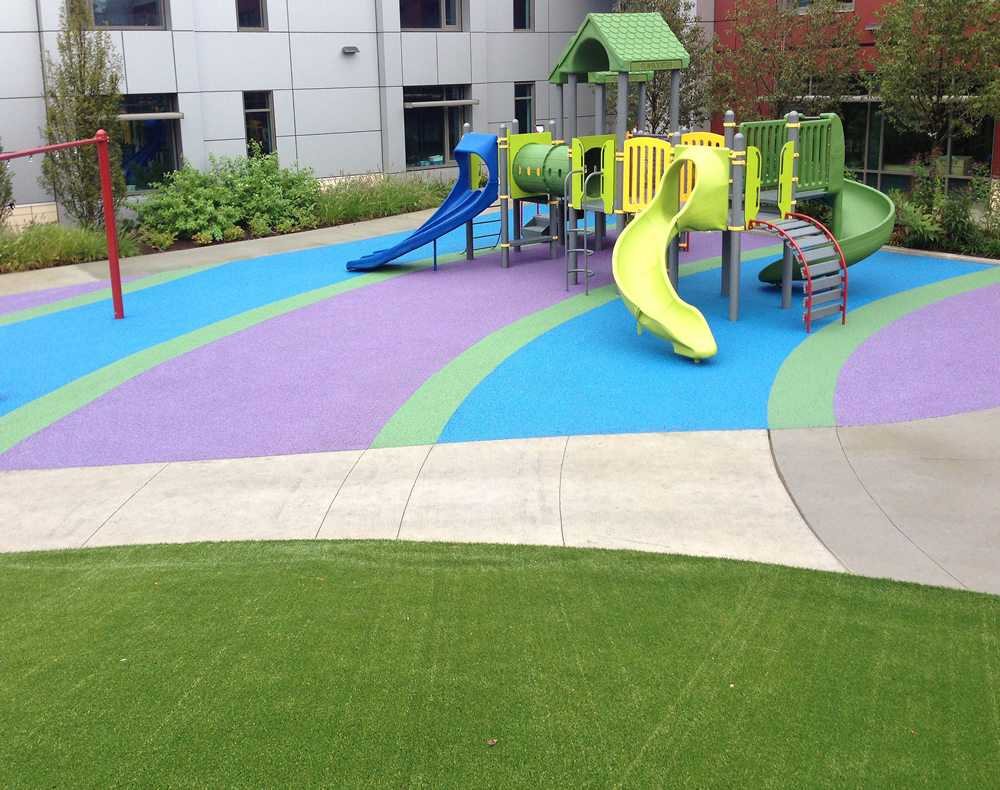Poured-in-place rubber (PIP) surfacing has revolutionized safety standards in playgrounds, recreational areas, and other spaces where impact protection is paramount. It’s not just about providing a cushioned surface for falls; there’s a complex science behind PIP rubber that ensures durability, safety, and environmental responsibility. In this comprehensive guide, we’ll delve into the intricate details of the science behind PIP rubber and explore why it’s become the gold standard in impact-absorbing surfacing.
What Do You Understand By Poured-In-Place Rubber?
At its core, PIP rubber consists of two primary components: rubber granules and a binding agent. The rubber bits are usually made from used tires, which is an environmentally friendly way to get rid of trash and makes the products very good at absorbing impact. Because these granules come in different sizes and colors, they can be changed to fit the needs of a particular design.
The binding agent is usually a two-component polyurethane mixture that acts as the adhesive, holding the rubber granules together and bonding them to the substrate. This binder is carefully formulated to withstand environmental factors such as UV exposure, temperature fluctuations, and moisture, ensuring the longevity of the PIP surface.
The Installation Process
The installation of PIP rubber involves several precise steps to achieve optimal results. Firstly, the substrate must be prepared by cleaning and leveling the surface to ensure proper adhesion. Once prepared, the binder is mixed according to manufacturer specifications and poured onto the substrate.
Next comes the critical step of mixing the rubber granules with the binder. This is typically done using specialized equipment that evenly distributes the granules and ensures thorough coverage. The mixture is then troweled or screeded to achieve the desired thickness and smoothness.
Once the surface has dried, which can take anywhere from 24 to 48 hours based on the weather, it is checked by quality control to make sure it is the right thickness and sticks well. Once it has been cleared, the PIP rubber surface can be used to make a playground that is safe and durable.
Impact Absorption And Safety
One of the main reasons why PIP rubber is so popular is that it is so good at absorbing impacts. Because the rubber granules are flexible, the surface can flatten when it hits something, lowering the force that hits a person falling. Because of this, PIP rubber is a great choice for parks and other places where kids like to play because it lowers the risk of injuries like broken bones and concussions.
The thickness and stiffness of the Poured In Place Rubber surface are very important in figuring out how well it handles impacts. Surfaces that are thicker and have more rubber in them absorb shock better, adding an extra layer of defense against falls from different heights.
Environmental Considerations
In addition to its safety benefits, PIP rubber is also environmentally friendly, thanks to its use of recycled materials and minimal environmental impact during installation. By repurposing discarded rubber tires, PIP rubber helps reduce landfill waste and promote sustainability.
Furthermore, PIP rubber surfaces are permeable, allowing rainwater to drain through the surface and replenish groundwater supplies. This helps prevent surface runoff and reduces the risk of flooding, contributing to the overall ecological balance of the surrounding environment.
Maintenance And Longevity
Maintaining a PIP rubber surface is pretty easy. All you have to do is clean it regularly to get rid of trash and stop dirt and other contaminants from building up. Also, checks should be done regularly to find any damage or signs of wear that might need to be fixed.
A properly installed PIP rubber surface can last for many years as long as it is properly maintained. During that time, it will continue to work well and keep people safe. Regular care not only makes the surface last longer but also helps make sure that safety rules and standards are always followed.
Conclusion
Poured-in-place rubber surfacing represents the pinnacle of safety and durability in playground and recreational surfaces. By combining recycled rubber granules with advanced binding agents, PIP rubber offers unparalleled impact absorption properties while promoting environmental sustainability.
Understanding the science behind PIP rubber is crucial for designing, installing, and maintaining surfaces that prioritize safety without compromising on performance. As communities continue to prioritize the safety of their recreational spaces, PIP rubber is poised to remain at the forefront of playground surfacing solutions, safeguarding the well-being of children and individuals of all ages.

